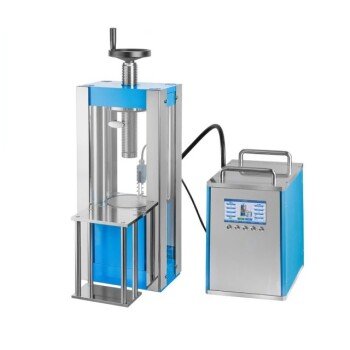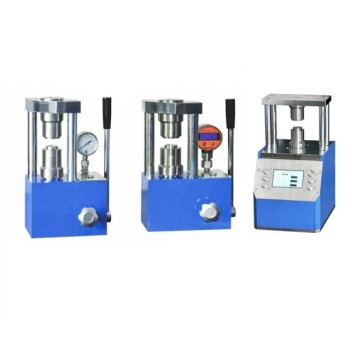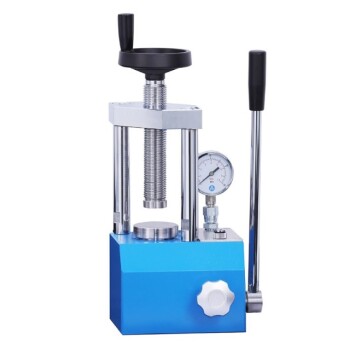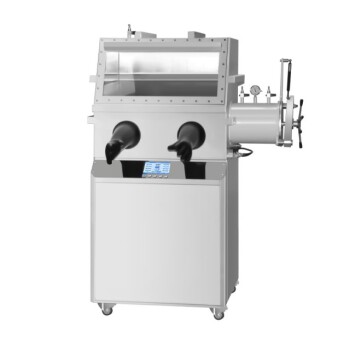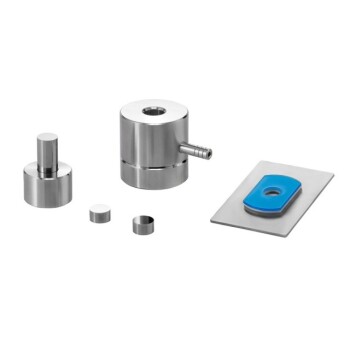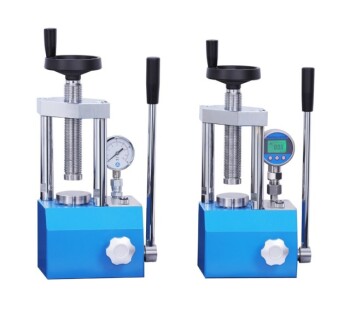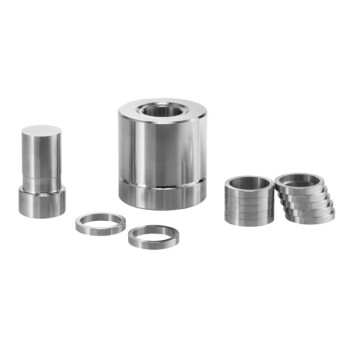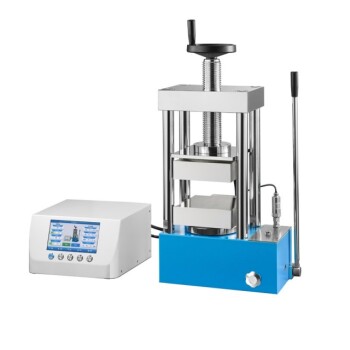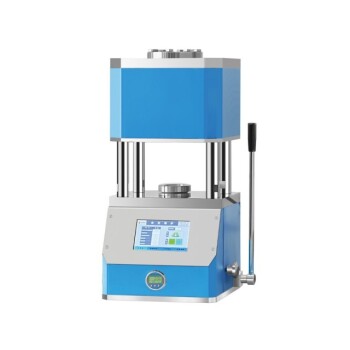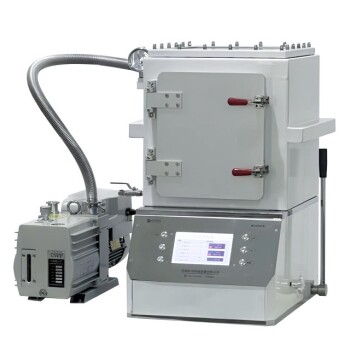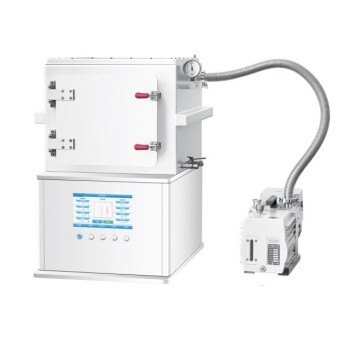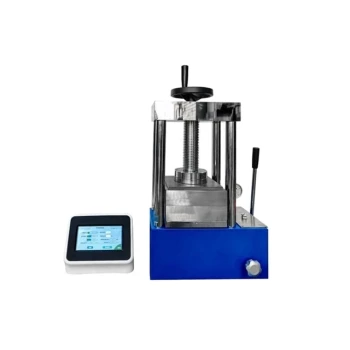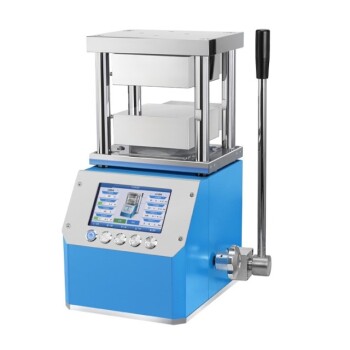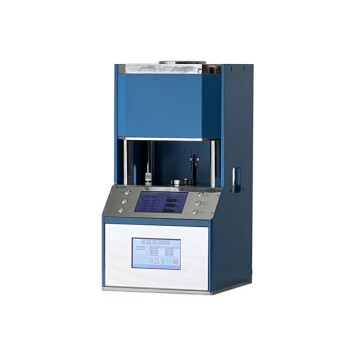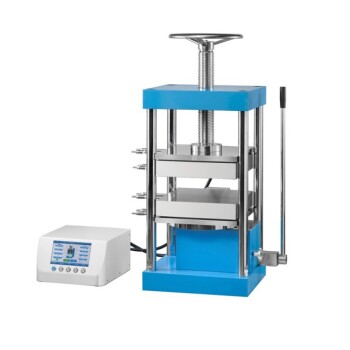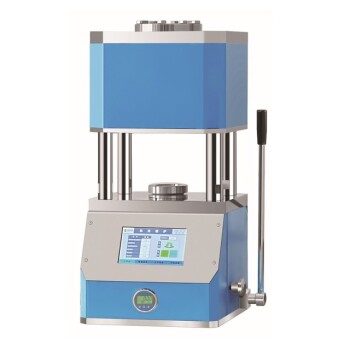In infrared (IR) spectroscopy, potassium bromide (KBr) is used as a sample matrix primarily because it is transparent to mid-range infrared radiation. Unlike many organic materials, KBr has no molecular vibrations that absorb light in the 4000 to 400 cm⁻¹ region. This property ensures that the resulting spectrum shows only the absorption bands of the sample, not the matrix material itself.
The core challenge in analyzing solid samples with IR spectroscopy is finding a way to get light through the sample without scattering. KBr acts as an "invisible window," allowing the infrared light to interact solely with your sample's molecular bonds.

The Principle of an "IR-Invisible" Matrix
Why Solid Samples Are Challenging
Solid materials in their raw, powdered form scatter infrared light heavily, which prevents a clean, interpretable spectrum from being obtained. To overcome this, the solid sample must be uniformly dispersed in a matrix that is transparent to IR light.
The Role of a Matrix Material
The matrix material, such as KBr, holds the finely ground sample particles in a fixed, non-scattering medium. The goal is to create a homogenous mixture that behaves like a single, semi-transparent object, allowing light to pass through for analysis.
What Makes KBr "Invisible" to IR?
KBr is a simple ionic salt. The vibration of the K⁺-Br⁻ ionic bond occurs at a very low frequency, well below the 400 cm⁻¹ cutoff for the mid-IR region that chemists use for structural analysis. Because it has no vibrations in this analytical window, it does not absorb IR light and provides a clean baseline.
Key Properties of an Ideal Matrix
Besides IR transparency, KBr has other crucial properties. It is a soft, crystalline salt that can be finely ground. Under high pressure, it becomes plastic and flows, forming a solid, transparent disk or pellet that locks the sample in place.
KBr Pellets vs. Nujol Mulls: A Critical Distinction
While your question uses the term "mulling agent," it's vital to distinguish between the two primary methods for solid sampling. KBr is used for pellets, not mulls.
The KBr Pellet Method
In this technique, a tiny amount of the solid sample is intimately mixed and ground with a much larger amount of dry, spectroscopy-grade KBr powder. This mixture is then placed in a die and compressed with a hydraulic press to form a thin, transparent pellet.
The Nujol Mull Method
A mull is prepared by grinding the solid sample with a few drops of a mineral oil called Nujol. This creates a thick paste, which is then spread between two salt plates (often made of NaCl or KBr) for analysis. Nujol serves to reduce light scattering, but it introduces its own spectral peaks.
Understanding the Trade-offs and Common Pitfalls
Choosing a sample preparation method involves understanding its inherent limitations. No technique is perfect, and awareness of the trade-offs is key to accurate interpretation.
The Nujol Problem: C-H Bands
Nujol is a hydrocarbon oil. As a result, it produces very strong absorption bands in the C-H stretching (2850-3000 cm⁻¹) and bending (1375-1465 cm⁻¹) regions. If your sample has important functional groups in these areas, a Nujol mull will completely obscure them.
The KBr Challenge: Absorbed Water
KBr is hygroscopic, meaning it readily absorbs moisture from the atmosphere. If the KBr used is not perfectly dry, you will see a broad, strong O-H absorption band around 3400 cm⁻¹ and a weaker H-O-H bending band near 1640 cm⁻¹. This can interfere with the analysis of N-H or O-H groups in your sample.
The Pellet Quality Issue
Making a good KBr pellet requires skill. If the sample is not ground finely enough or distributed evenly, the pellet will appear cloudy and scatter light, leading to a poor, sloping baseline. Insufficient pressure can also lead to a fragile pellet that falls apart.
Making the Right Choice for Your Sample
Your choice of technique depends directly on the analytical goal and the chemical nature of your sample.
- If your primary focus is obtaining the cleanest, most complete spectrum: The KBr pellet method is superior, as it provides a clear background across the entire mid-IR range, provided the KBr is dry.
- If your primary focus is rapid, qualitative analysis: A Nujol mull is a fast and simple technique for getting a quick look at a sample's fingerprint, as long as you can ignore the C-H regions.
- If your primary focus is analyzing a sample's C-H stretching region: The KBr pellet is the best choice, as Nujol's own spectrum would completely mask the relevant peaks.
Ultimately, selecting the right sample preparation method is the first step toward revealing the true chemical structure of your material.
Summary Table:
| Property | Why It Matters for IR Spectroscopy |
|---|---|
| IR Transparency | No absorption bands in the mid-IR region (4000-400 cm⁻¹), providing a clean baseline. |
| Pellet Formation | Becomes plastic under pressure, forming a solid, transparent disk that minimizes light scattering. |
| Key Limitation | Hygroscopic; can introduce water bands (~3400 cm⁻¹, ~1640 cm⁻¹) if not perfectly dry. |
| Vs. Nujol Mulls | Avoids strong C-H bands from mineral oil, making it superior for analyzing hydrocarbon regions. |
Ready to achieve superior clarity in your IR spectroscopy?
The right sample preparation is critical for accurate results. KINTEK specializes in high-purity, spectroscopy-grade potassium bromide (KBr) and reliable pellet presses, ensuring your solid samples are analyzed with precision and minimal interference.
We provide the quality materials and expertise to help you:
- Obtain clean, interpretable spectra across the entire mid-IR range.
- Avoid common pitfalls like moisture absorption or poor pellet formation.
- Select the optimal preparation method for your specific analytical needs.
Let's optimize your lab's capabilities. Contact our experts today to discuss your IR spectroscopy requirements!
Visual Guide
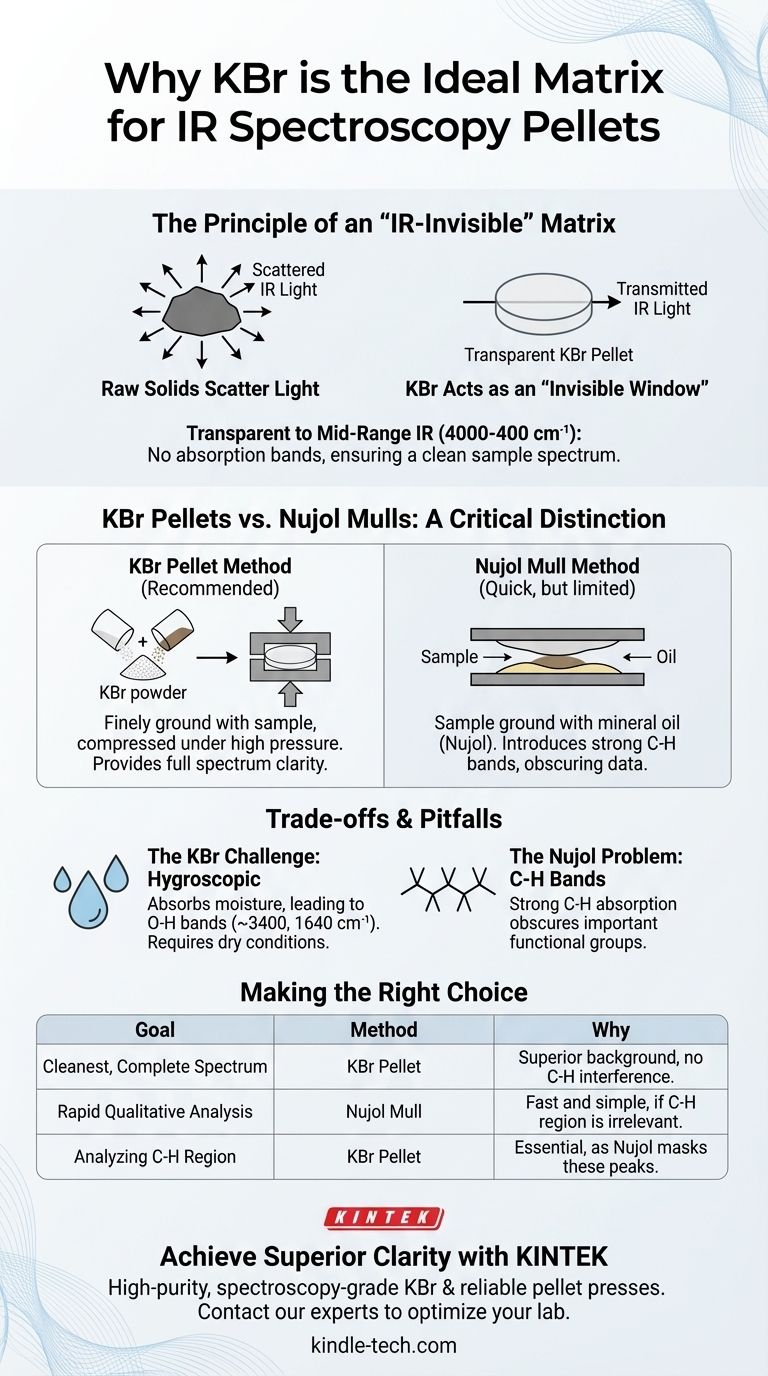
Related Products
- Laboratory Hydraulic Press Split Electric Lab Pellet Press
- Laboratory Hydraulic Press Lab Pellet Press for Button Battery
- Automatic Laboratory Hydraulic Pellet Press Machine for Lab Use
- Laboratory Manual Hydraulic Pellet Press for Lab Use
- kbr pellet press 2t
People Also Ask
- Why is the KBr plate used in FTIR? Achieve Clear, Accurate Solid Sample Analysis
- What is KBr disc method? A Complete Guide to IR Spectroscopy Sample Prep
- How does pressure affect hydraulic system? Mastering Force, Efficiency, and Heat
- What is the purpose of KBr pellets? Unlock Clear FTIR Analysis of Solid Samples
- Why do we use KBr in FTIR? The Key to Clear, Accurate Solid Sample Analysis
